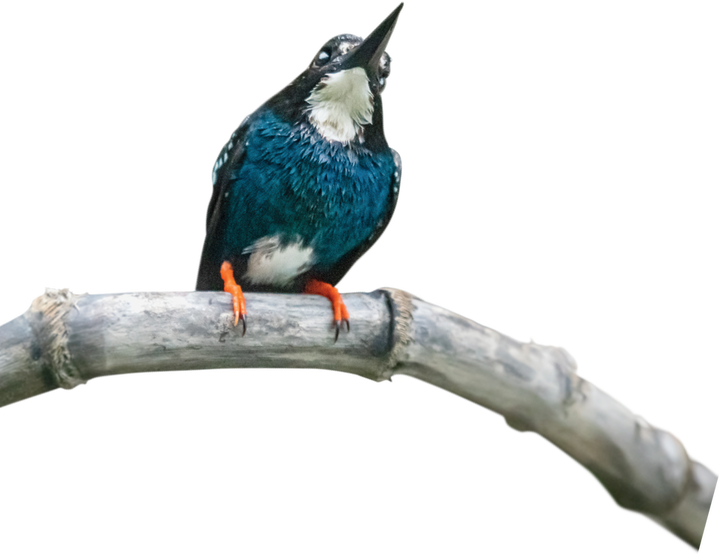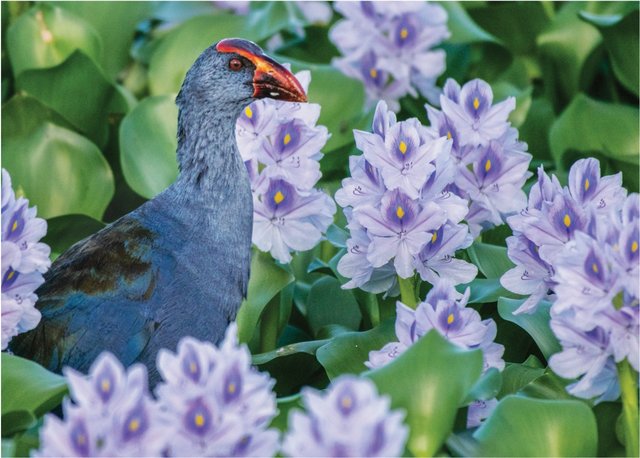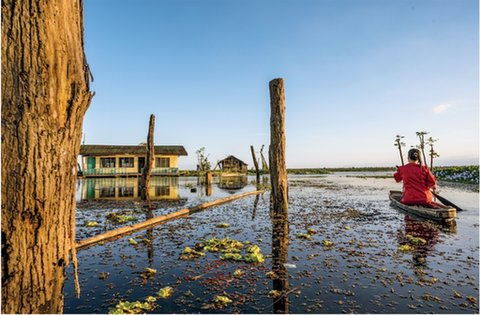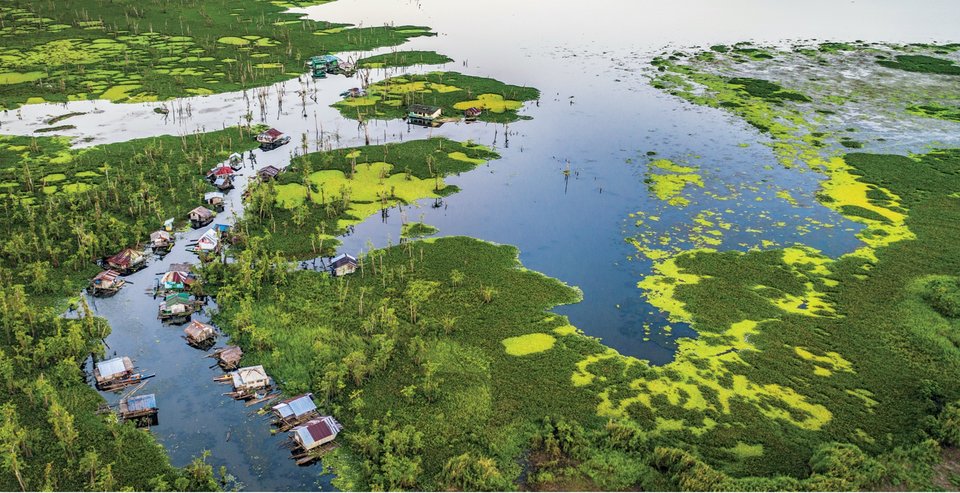
Indian
Ocean
Pacific
Ocean
Asia
Australia
Philippines
Agusan
Marsh

Asilverykingfishersitsona branch.
TheAgusanMarshisacomplexwetlandecosysteminthePhilippines.Itismadeupofinterconnectedmarshes,lakes,rivers,and swamps.
Icometothisplacetophotographwhatliveshere.TheAgusanishometomanyplantandanimalspecies—includingmorethan200endemicandmigratorybirds.Itisacrossroadsforthebirds.SomecomefromasfarasRussia,Japan,andChinaduringwinter.Itisalsohometomorethan100speciesoffloweringplantsand trees.
TheseplantsandanimalssharethiswetlandwiththeManoboTribe.Theseindigenouspeopleliveinfloatinghousesinthe marsh.
Here,thelandscapechangesfromwatertolandbyseason.Duringthewetorrainyseason,itistransformedintoavastbaythatstoresrainwaterandbufferstropicalstormscalledtyphoons.Itprotectscities,towns,andvillagesdownstreamfromfloods.Italsoabsorbspollutantsandimprovesthequalityofwaterthatflows.Waterlilies,trees,andfernsactasfiltersbycleaningthe water.
MarshlandDangers
Despitebeingaprotectedarea,theAgusanMarshisintrouble.Climatechangeisaconstantthreat.Theaveragewaterlevelofthemarshesandlakesisdecreasingfromprolonged drought.
Atthesametime,frequentandseveretyphoonshavecausedhavoc.ThisisespeciallytrueinthefloatingcommunitiesoftheManobo,wheretheirstilthousesaredestroyedby flooding.

Apurpleswamphenrestsamidwater lilies.

AbrahminykitesoarsabovetheAgusan River.
Thereareotherchallengesaswell:agricultureandillegallogging.Today,theswampforestsarebeingdestroyed.Layersandlayersofpeatlandsarebeingburnedtoclearthelandforbuilding.Atthisplace,roostingsitesofegretshavebeendisturbedbyplumesofsmokeand ash.
Theburningofthesepeatlandsalsoreleasestonsofcarbonintotheatmosphere.Thishastenstheimpactofclimatechangebyraisingtemperatures.Itultimatelydisturbstheecologicalbalance here.
peatfiresintheAugusan Marsh

The Manoboliveinhousesthatrestonthe water.
StrengthinCommunity
Allisnotlost,however.TheManoboandenvironmentalistsareworkingtogethertoprotectandconservetheAgusan Marsh.
It’shardtocombatclimatechange.Butbyenforcingenvironmentallaws,theyareputtinganendtomanydamagingpractices.Theyarepressuringloggingandminingbusinessestostopburningthepeatlandsandtostopcuttingdowntheswamp forests.
Focusingonasenseofplaceandcommunityempowerspeopletoactandworktowardgreaterconservationand stewardship.
abird’s-eyeviewoftheManobotribalhouses inthe marsh

